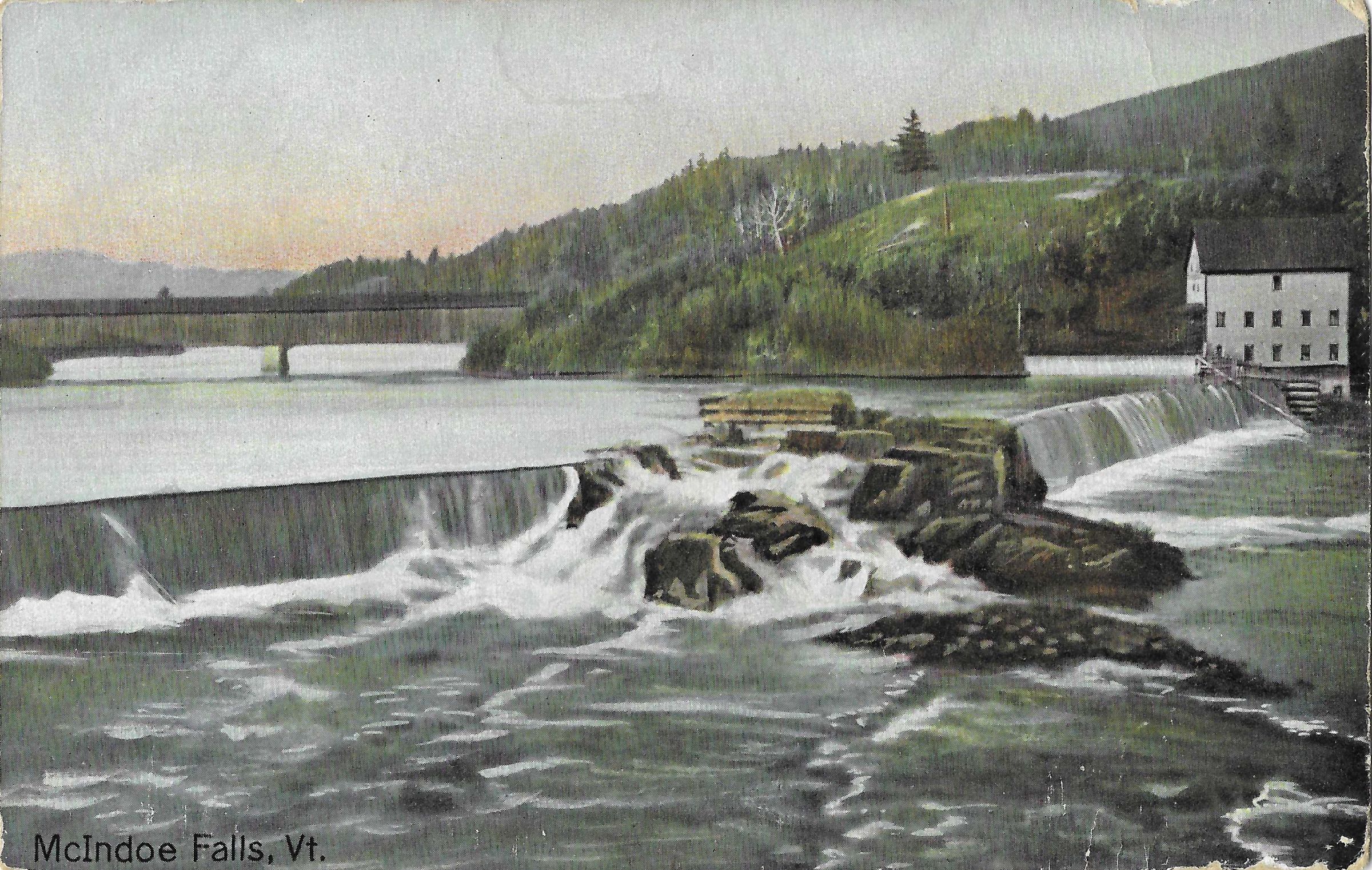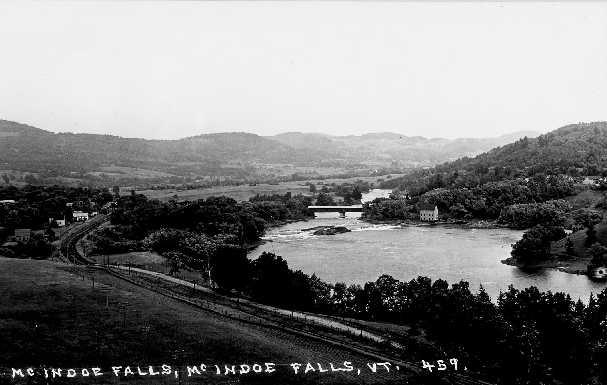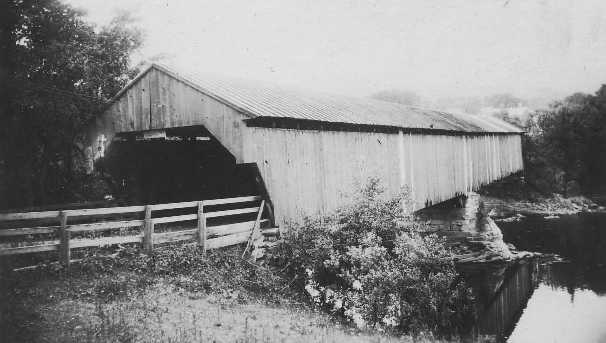| Inventory Number: | VT/45-03-49x / NH-05-93x | | County: | Caledonia County / Grafton County | | Township: | Barnet - Monroe | | Town/Village: | McIndoe Falls | | Bridge Name: | McIndoe Falls or Lyman Toll | | Crosses: | Connecticut River | | Truss type: | Long | | Spans: | 2 | | Length: | 250' | | Roadway Width: | | | Built: | 1834 | | Builder: | Passumpsic Turnpike Company / Peter Paddleford | | When Lost: | Sep 1930 | | Cause: | Replaced | | Latitude: | N44 15.70 | | Longitude: | W072 03.53 | | See a map of the area
Topographic map of the area | | Directions: | McIndoe Falls Road at Monroe, NH. |
|

McIndoe Falls or Lyman Toll Bridge, Monroe, NH-McIndoe, VT (Built 1834 - Lost 1930)
Bill Caswell Collection
McIndoe Falls or Lyman Toll Bridge, Monroe, NH-McIndoe, VT (Built 1834 - Lost 1930)
Richard Donovan / Trish Kane Collection

McIndoe Falls or Lyman Toll Bridge, Monroe, NH-McIndoe, VT (Built 1834 - Lost 1930)
Richard E. Roy Collection
|
Sources:
The Caledonian-Record, Friday, March 21, 1930, Page 7
Nelson, Joseph C.. Spanning Time - Vermont's Covered Bridges, 1997, page 252
Connecticut River Valley Covered Bridge Society. Bulletin, Volume X, No. 2, Fall 1963, page 4 |